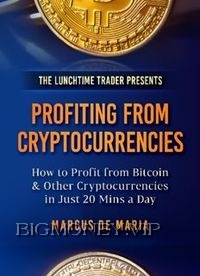
1. Introduction
“Science-Fiction is now Science-fact”
- Unknown
At the end of 2016 I read that some cryptocurrencies had gone up by 5000% in
just 12 months. I decided to do some research, fast. This is what I found: $100
worth of Bitcoins bought in 2010 would be worth well over $27 million today.
How could I have missed out on those returns? It was time to get in.
A few weeks of research later and I had bought 15 different cryptocurrencies
using speculation money. Most of the coins quickly went into profit, some
substantially. I decided I needed to take this more seriously and really do some
research. If not me then who? If not now then when? You have to be in the
game to win it!
I paid several thousand dollars for the best crypto subscription service I could
find, and started buying more and more cryptos based on their
recommendations. I got obsessed – I was even listening to it while going
running. At the time of writing, I now own more than 36 different cryptos and
over 50+ positions, have banked some profits and am still up over 70% on my
entire investments. Not a bad start.
As you can see, I invested $73,000 and made a profit of $64,000 which is an
88% gain. This happened in as little as just 3 months. This was definitely helped
by a fast growing Altcoin called NEO. I invested just $850 and turned that into
$26,300 profit! I am not sure where else you can do that at the current time
but it is possible with cryptocurrencies.
So what are cryptocurrencies and where did it all start?
1. A decentralised system for sending money to other people
Most payment systems run on a centralised network. The problem with this is
that you have to incur unnecessary and expensive transaction fees. Usually,
this is done by a central server that keeps track of your balances i.e. your credit
card and/or the banks. It can also take several days for one bank to talk to
another bank and so sending money becomes both expensive and takes too
long.
A programmer calling himself Satoshi Nakamoto successfully found a way to
build a decentralised digital cash system, thus avoiding the need for a
centralised system. He describes it in a surprisingly simple way in his White
Paper for Bitcoin, which I have added in the Appendix. You should read it
before buying Bitcoin.
A Beginner's Guide to Profiting from Cryptocurrencies by Marcus De Maria




